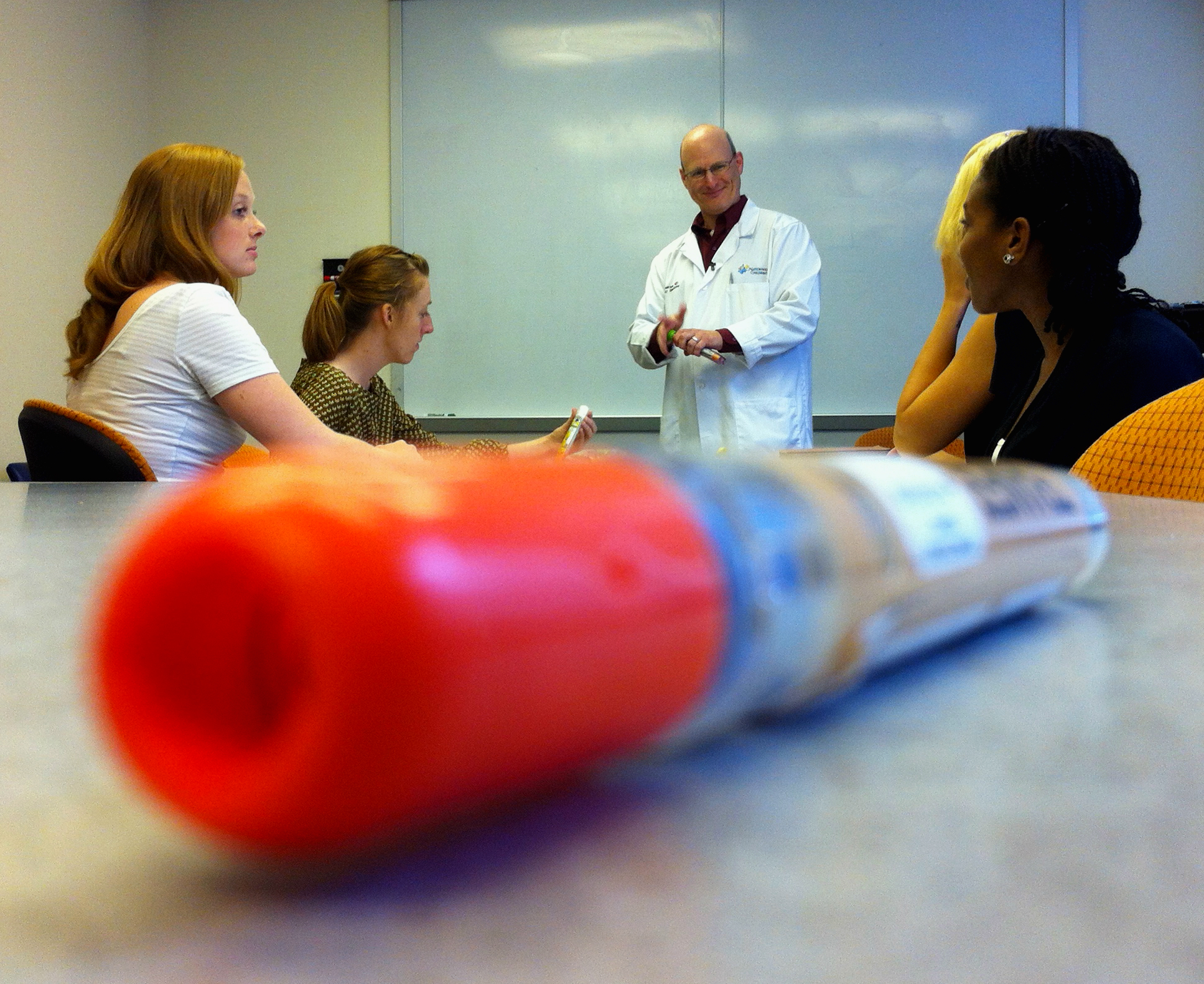
Allergic Action: Quick Response Critical to Saving Lives | Op-Ed

Daniel Scherzer, an emergency medicine physician and pediatric specialist at Nationwide Children’s Hospital, contributed this article to LiveScience’s Expert Voices: Op-Ed & Insights.
Now that school is letting out for the summer and children all over the country will be headed to summer camp, there is a lesson no parent or camp counselor can afford to miss: Improperly responding to a student’s severe allergic reaction to food can be dangerous, and in extreme cases, even deadly.
As an emergency medicine physician at Nationwide Children’s Hospital, I want to encourage people to learn more about recognizing and responding to allergic reactions. May 12-18 is Food Allergy Awareness Week and serves as a reminder to review the topic.
Epinephrine injectors (syringes filled with the drug epinephrine) can help during an allergic reaction; in fact, they can be crucial. Using epinephrine can improve symptoms for about 20 minutes. This is enough time to call 911 and get emergency help.
Nationally, the number of children with food allergies is increasing. We’re not really sure why that’s happening, but we want more people to be prepared to act if those children ever find themselves dealing with a severe allergic reaction. [Peanut Allergy Cases Triple in 10 Years]
All children and adults with a potentially severe food allergy that places them at risk for anaphylaxis — severe, sudden allergic reactions — should have two epinephrine auto-injectors quickly available to them at all times. School nurses and parents of children with severe allergies should be comfortable enough to know not only how, but also when, to use such injectors.
But, what about babysitters, aunts, uncles or other people who might be left in charge of children? Each year, as many as 150 people actually die from food allergies and thousands more experience severe reactions. Some of these people actually had epinephrine in the vicinity. Epinephrine was available; it just wasn’t used or it wasn’t used in time.
Sign up for the Live Science daily newsletter now
Get the world’s most fascinating discoveries delivered straight to your inbox.

The prospect of injecting someone with epinephrine can be intimidating, particularly when you have to act on behalf of a child or someone else who can’t self-administer. We have found that a little bit of hands-on training and discussion goes a long way in terms of preparing for that possibility.
Nationwide Children’s Hospital has developed a method to assess how people's familiarity with epinephrine injectors, and a way to teach them how and when to use them. We also have a video that shows you how to use an EpiPen; to see it, visit NationwideChildrens.org/EpiPen.
Hear Scherzer join a discussion on the potential harm from food ingredients in a podcast episode of the program Pediacast.
The views expressed are those of the author and do not necessarily reflect the views of the publisher.









